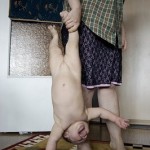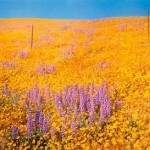“Is photographic art in relation to history nothing other than record?” We Can’t Paint blogger and photographer Noel Rodo-Vankeulen posed an interesting question last month that stuck with me. It began with photographer Brian Ulrich‘s blog post:
“I’m always somewhat surprised that there are not more artists reacting to environmental conditions. Perhaps it’s from spending so much time among students, perhaps it’s the latent and fizzling art market that plucked hipsters from bars and placed them on art fair stages, but it still seems so many young artists are still concerned primarily in their work with the self.”
“Since last spring I’ve been photographing much of the retail end of the economy downtown…I’ve come across a few others who share some of the same subject and concern, and certainly many Flickr examples. But the few I’ve come across pale in comparison to the number of ‘drunken party pictures’, ‘ambiguous ambiguity’ or the ‘pretty portraits of pretty people’ projects. This is not to denounce that work, some of which I’ve a big fan of, I simply can’t help but wonder when a topic so large looms in front of young artists why not the desire to address it through their work? Is the self still so important? Will it really be how we remember the beginning of the 21st century?”
As a young person taking and collecting photography Ulrich calls ‘drunken party pictures’, ‘ambiguous ambiguity’ or the ‘pretty portraits of pretty people’ it makes me really pause and think about the potential power of visual media.
I found a Visual Sociology ethnographic research project called Visible Voices which addresses health issues in different communities through digital media. The researchers partner with participants from the community to collaborate on producing visual products to share with the community. This not only encourages dialogue about community issues, but also gives agency to the participants to represent their own communities. Here is a film made by villagers from Tolok, Kyrgyzstan.
But how does “art for art’s sake” fit into this idea of visual activism? Or as Chinua Achebe stated quite plainly, is art for art’s sake “just another piece of deodorised dog shit”?





No Comments